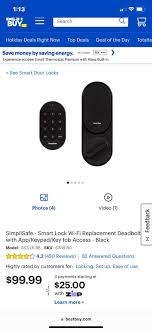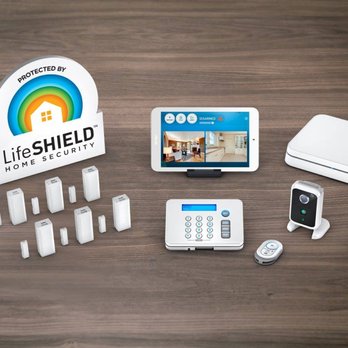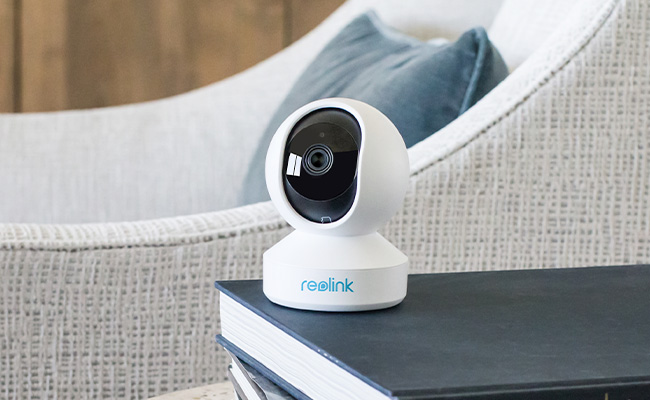
Schlage Encode deadbolts have some of the highest features available. It comes with Wi-Fi built-in, which allows you remote control your door and manage up to 100 guest access code. It also has a touchscreen with a fingerprint-resistant and capacitive surface for easy one-touch locking.
Wi-Fi-enabled deadbolt
This Wi-Fi-enabled deadbols from Schlage pairs with the Schlage Home app to make it possible to create recurring and permanent guest access codes. It can store up to 100 codes, and the fingerprint-resistant touchscreen enables one-touch locking and unlocking.

The Schlage Encode Smart WiFi Deadbolt connects with the home's WiFi and is compatible with most smart home hubs, including Apple HomeKit, Amazon Alexa, and Google Assistant. The device is compatible with any Z-Wave gadget, such as a smartTV. It can also be controlled from a smartphone via Bluetooth. However, it is not yet compatible with Zigbee hubs.
Lacks two-factor authentication
One of the problems with Schlage Encode is its lack of two-factor authentication. The device lacks this feature and you need to use a separate app to set it up. It is susceptible to connectivity problems, as well as not having sufficient bandwidth. This problem can be fixed by unplugging your Schlage Encode, and then reconnecting it.
Or it could not connect to the correct network. Also, it may be connected to the wrong WiFi band. You need to ensure that the device is not too far from your router.
Lacks dual data encryption
Schlage Encode Plus claims that it uses dual data encryption (upto 128 bit AES). This should protect against unauthorized access. The app of the smart lock does not have two-factor authentication. This alerts you if anyone attempts to access your account. The Wyze Lock is another smart lock that offers two-factor authentication. To use this feature, you will need an app.

Lacks fingerprint sensor
Invisible locks, which lack a touchscreen or other accessories, are wireless and work with a fingerprint sensor. You can control them using your mobile phone, tablet or voice recognition. These locks can also be unlocked via Bluetooth or Wi-Fi waves. They are an excellent choice for landlords that are concerned about security.
FAQ
Do I really require a home security system?
You should have a home security system if you own a property. A burglar could break into your houseat any time without warning. They will take everything they want, even expensive jewelry. They can even take everything if your doors are unlocked.
A home security system helps protect your home by alerting you whenever something happens. This includes monitoring motion, sending you alerts to mobile devices, recording activity, as well as allowing access to recorded footage.
A simple DIY camera can be used if you don't want to spend money on a security system. These cameras let you see who is at your door and give you notification when they come or go. They won't stop burglars from entering your home.
What is the best system for home surveillance?
You should invest in a home security system that includes cameras to protect your family and property from potential criminals. These systems are simple to set up and can provide many benefits to both renters and homeowners. These systems allow you to remotely monitor your property using your smartphone, tablet or computer.
What is the simplest home security system you can install?
Home security systems that don’t require any installation are the best. These systems are also known as "plug & Play" and work like magic. It is as simple as plugging them into the power socket and connecting them to the Internet using a wireless network router. Once everything is connected, you will be able control it from anywhere in the globe.
How much does a good home security system cost?
A home security system is about $2,500. Although it may seem expensive, the benefits of a secure and safe home are worth every penny.
Statistics
- Depending on your insurance, 24/7 professional monitoring may qualify you for as much as 15% off your premium. (safewise.com)
- That's probably why Cove has a whopping 98%* customer retention rate. (safewise.com)
- Related questionsHome security systems that are 100% DIY (safewise.com)
- (In my experience, the discount on my home insurance covered about 25 percent of the subscription of an average plan, but your mileage may vary depending on your location and the size of your home.) (theverge.com)
External Links
How To
How to Install Home Security Systems
A home security system is a device that monitors your property and alerts you if there's any activity. It could include a motion sensor or doorbell camera, smoke detectors, flood alarms, carbon monoxide detectors, burglar alarms, and flood alarms. A home security package usually includes one or more sensors (e.g. a motion detector), which send signals whenever they detect sound or movement. The signals are then sent over to a control box where they are monitored and recorded. The control panel will send an alert to your smartphone, tablet, computer or voice assistant if there is a problem, such as someone breaking into your home. You will immediately be notified and can take appropriate action.
You must first choose the right kind of sensors for you home in order to install a home alarm system. There are two main types. Active and passive sensors. Passive sensors don’t require batteries. They only pick up sounds, vibrations and other signals from their environment. They include things like doorbells, sirens, and buzzers. Active sensors transmit data using electricity. These sensors include motion sensors and cameras.
There are many options for sensors. Each brand has its advantages and disadvantages. Some sensors are weatherproof and others aren't. Some have built-in speakers that allow you to hear them outside. Others are only for use inside. Others are more complex, while some offer more advanced features like night vision.
After deciding on the best type of sensors for your property, you'll want to choose a manufacturer. This will make sure that your sensors function well together. There should be many options at your local hardware store.
Once you have selected a brand of sensor, you need to decide the number you wish to buy. Depending upon whether they live alone or in a group, most people begin with one or two sensors. However, if you plan to add additional sensors later, you might consider buying extra than you think you'll need now.
Next, you'll need to figure out where you want to place your sensors. Are they near windows or doors? Do you prefer to keep them away? Before placing them on your property, get permission. It is important to ensure they do not interfere with electrical outlets.
Once you have determined where your sensors should be placed, you will need to find a way to connect them with your control panel. Depending on your setup you might need to buy a power adapter and/or battery pack. Once everything is set up, it's time to start monitoring your property.